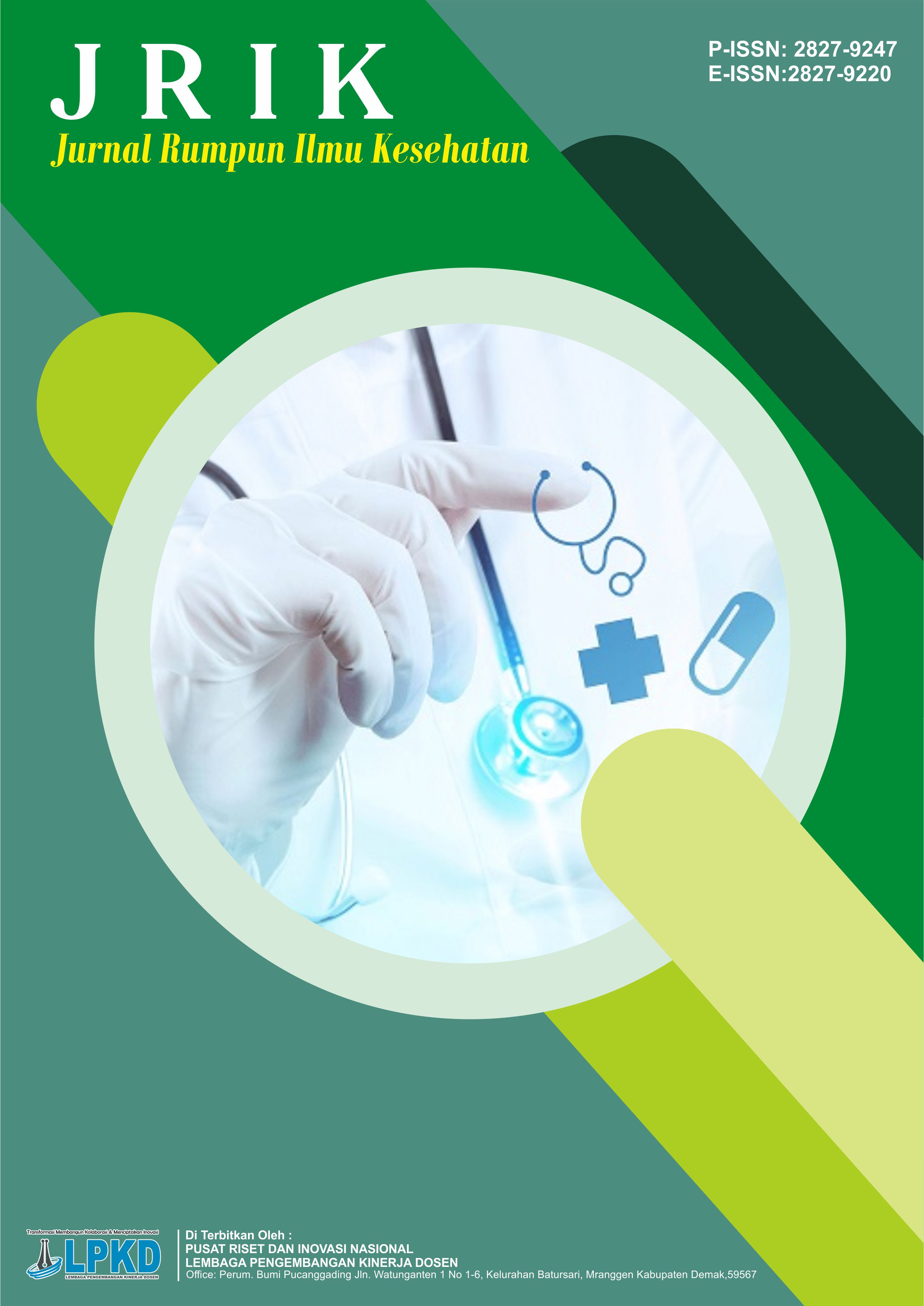Analisis Implementasi Kebijakan Penurunan Stunting di Desa Penfui Timur Kabupaten Kupang
DOI:
https://doi.org/10.55606/jrik.v5i1.4950Keywords:
Implementation, policy, stuntingAbstract
According to the anthropometric standards for evaluating children's nutritional status, stunting is a growth failure condition based on the weight-for-age (W/A) or height-for-age (H/A) index, where the measurement results fall within the threshold (Z-Score) of -2 SD to -3 SD (short/stunted) and -3 SD (very short/severely stunted). In 2023, 27.3% of the toddlers in Penfui Timur Village were still stunted. The purpose of this study is to ascertain how stunting reduction policies are being implemented in Penfui Timur Village, Kupang Regency. This research used a qualitative descriptive method with data collection techniques of in-depth interviews, observation and documentation. The informants in this study is 8 informants, consisting of 2 main informants and 6 supporting informants. The main informants are the head of the Penfui Timur village and the nutrition staff of the Tarus Health Center. The supporting informants are 2 posyandu cadres, mothers of stunted toddlers, pregnant women, village residents, and teenage girls.The data analysis process in this research begins by collecting data from interviews and then reducing the resulting data. After that, the data is presented and concluded. The study's result showed that although the policy has been applied effectively, it still falls short of the implementation theory's requirements. The implementers' low educational and human resource levels, the ignorance of expectant mothers and parents of children with stunted growth, and the lack of facilities and infrastructure are the contributing reasons. Although the village government's communication component with other implementing parties has been functioning smoothly, communication with the leaders of the target community has not been at its best. The policy implementers are already familiar with the methods and duties associated with their respective areas of responsibility. The bureaucratic structure's policy implementers are already familiar with the technical facets of reducing stunting. Based on the results of the study, it is recommended to increasing the knowledge involved in implementation policy for stunting reduction
Downloads
References
Dinkes Kab. Kupang. (2020). Data Prevalensi Stunting di Kabupaten Kupang.
Dinkes Kab. Kupang. (2024). Data Prevalensi Stunting di Kabupaten Kupang.
Howlett, M., & Cashore, B. (2014). Conceptualizing public policy. In Comparative policy studies: Conceptual and methodological challenges (pp. 17–33). Springer.
Hudson, B., Hunter, D., & Peckham, S. (2019). Policy failure and the policy-implementation gap: can policy support programs help? Policy Design and Practice, 2(1), 1–14.
Hoddinott, J., Alderman, H., Behrman, J. R., Haddad, L., & Horton, S. (2013). The economic rationale for investing in stunting reduction. Maternal and Child Nutrition, 9(S2), 69–82. https://doi.org/10.1111/mcn.12080
Https://ntt.bps.go.id/publication/2019/08/16/da2737bf17e4d09b5c5022bc/provinsi-nusatenggara-timur-dalam-angka-2019.html diakses pada 6 Desember 2024
Madan, E. M., Haas, J. D., Menon, P., & Gillespie, S. (2018). Seasonal variation in the proximal determinants of undernutrition during the first 1000 days of life in rural South Asia: A comprehensive review. Global Food Security, 19(August), 11–23. https://doi. org/10.1016/j.gfs.2018.08.008
Madani, S. (2023). Penanganan Stunting Balita Di Kabupaten Aceh Tengah. UIN Ar-Raniry Banda Aceh.
Peraturan Bupati Kupang Nomor 19 tahun 2021 Tentang Perubahan Atas Peraturan Bupati Kupang Nomor 49 Tahun 2019 Tentang Percepatan Pencegahan Dan Penurunan Stunting.
Pratiwi, D. A. (2023). IMPLEMENTASI KEBIJAKAN PENANGGULANGAN STUNTING DI KOTA BATAM. Jurnal EL-RIYASAH, 14(1), 15–29.
Risekdas. (2018). Data Riset Kesehatan Dasar Tahun 2018.
Sugiyono, D. (2013). Metode penelitian pendidikan pendekatan kuantitatif,. Kualitatif Dan R&D.
WHO. (2014a). Global Nutrition Targets 2025: Stunting Policy Brief. World Health Organization. Geneva.
Downloads
Published
How to Cite
Issue
Section
License
Copyright (c) 2025 Jurnal Rumpun Ilmu Kesehatan

This work is licensed under a Creative Commons Attribution-ShareAlike 4.0 International License.









